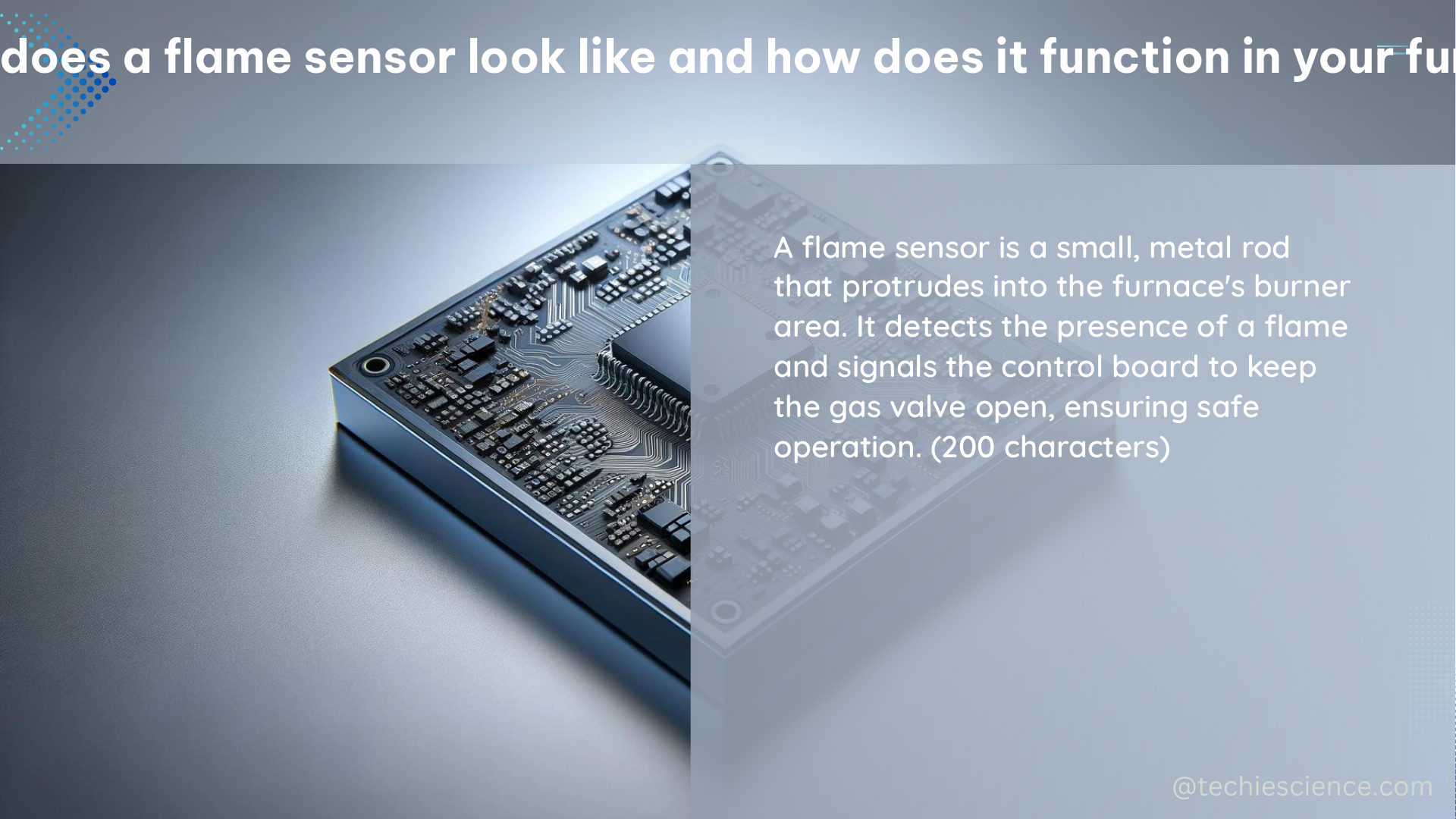A flame sensor is a critical safety component in a furnace, responsible for detecting the presence of a flame and ensuring the safe operation of the heating system. This comprehensive guide will delve into the intricate details of what a flame sensor looks like and how it functions within your furnace, providing you with a thorough understanding of this essential device.
Appearance and Positioning of a Flame Sensor
The flame sensor in a furnace typically appears as a short, thin metallic rod, often coated with a ceramic material to protect it from the intense heat of the burners. The sensor is typically positioned in the path of the burner, allowing it to directly detect the heat and presence of the flame.
The dimensions of a flame sensor can vary, but they are generally between 1/4 inch and 1/2 inch in diameter and 1 to 2 inches in length. The specific size and shape of the sensor may depend on the make and model of the furnace, as well as the manufacturer’s design specifications.
Principle of Operation: Flame Rectification

The flame sensor in a furnace operates on the principle of flame rectification, which is a unique electrical phenomenon that occurs when a flame is present. This principle is based on the difference in mobility between positive ionized particles in the flame.
When a flame is ignited, the sensor detects the flow of current through the flame, which acts as a rectifier, allowing current to flow in one direction but not the other. This unidirectional current flow is what the sensor interprets as the presence of a flame.
The technical details of this process are as follows:
- Ionization of Flame: The high-temperature flame ionizes the surrounding air, creating a mixture of positively charged ions and negatively charged electrons.
- Mobility Difference: The positively charged ions in the flame have a higher mobility than the negatively charged electrons, creating an asymmetry in the current flow.
- Rectification Effect: The flame acts as a rectifier, allowing the current to flow more easily in one direction (from the sensor to the flame) than the other, creating a measurable voltage difference.
- Signal Generation: The sensor detects this voltage difference and generates an electrical signal that is sent to the furnace’s control board, indicating the presence of a flame.
Flame Sensor Testing and Troubleshooting
To ensure the proper functioning of the flame sensor, it is essential to perform regular testing and maintenance. Here are the key steps to test and troubleshoot a flame sensor:
- Grounding Verification: Ensure that the furnace is properly grounded by taking an ohm reading between the neutral and the burner assembly. A reading of a few ohms of resistance indicates a good ground.
- Burner-to-Neutral Test: Test from the burners to neutral to confirm that the burners are electrically equivalent to the neutral, indicating a good path.
- Flame Sensor Resistance Check: Measure the resistance of the flame sensor using a multimeter. The resistance should be within the manufacturer’s specified range, typically between 20 and 70 ohms.
- Flame Sensor Voltage Check: With the furnace running, measure the voltage between the flame sensor and the control board. The voltage should be within the manufacturer’s specified range, typically between 0.5 and 5 volts.
- Flame Sensor Replacement: If the flame sensor is not functioning correctly, it may need to be replaced. Consult the furnace’s manual or a qualified HVAC technician for the proper replacement procedure.
Importance of Flame Sensor Maintenance
The flame sensor is a critical safety device in a furnace, and its proper functioning is essential for the safe and efficient operation of the heating system. If the flame sensor fails to detect a flame, it will cause the furnace to shut down, preventing the release of unburned gas, which could be a fire hazard.
Regular maintenance and testing of the flame sensor can help ensure its reliable performance and extend the lifespan of the furnace. By following the recommended testing procedures and addressing any issues promptly, you can help ensure the safe and efficient operation of your furnace.
Conclusion
The flame sensor is a vital component of a furnace, responsible for detecting the presence of a flame and ensuring the safe operation of the heating system. Understanding the appearance, positioning, and principle of operation of the flame sensor is crucial for maintaining and troubleshooting your furnace.
By following the guidelines outlined in this comprehensive guide, you can confidently assess the condition of your furnace’s flame sensor and take the necessary steps to ensure its proper functioning. Remember, regular maintenance and testing are key to keeping your furnace running safely and efficiently.
References:
– What Do You Know About a Furnace Flame Sensor and How It Works?
– Everything You Need to Know About the Furnace Flame Sensor
– Flame Sensing: The Basics
– Flame Sensor
– What You Need to Know About Your Furnace Flame Sensor

The lambdageeks.com Core SME Team is a group of experienced subject matter experts from diverse scientific and technical fields including Physics, Chemistry, Technology,Electronics & Electrical Engineering, Automotive, Mechanical Engineering. Our team collaborates to create high-quality, well-researched articles on a wide range of science and technology topics for the lambdageeks.com website.
All Our Senior SME are having more than 7 Years of experience in the respective fields . They are either Working Industry Professionals or assocaited With different Universities. Refer Our Authors Page to get to know About our Core SMEs.